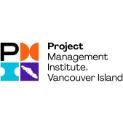July 02 2025 at 07:00AM
Construction Project Management & Integration of Sustainability
The P5 Ontology Framework for Sustainable Project Management
The P5 ontology, part of the GPM P5 Standard, provides a structured approach to embedding sustainability in construction project management. This model categorizes sustainability into five key areas:
- People – Ensuring fair labor practices, safety, and community engagement.
- Planet – Managing resources, reducing waste, and minimizing ecological footprint.
- Prosperity – Creating economic value through cost-effective sustainability initiatives.
- Products – Designing and constructing environmentally friendly buildings.
- Processes – Implementing efficient project management techniques to enhance sustainability.
By integrating these five elements into project planning, construction projects can achieve sustainability goals while maintaining project efficiency.
Key Strategies for Sustainable Construction Project Management
- Sustainability Objectives and Performance Metrics
Establishing clear sustainability objectives is crucial. A project team may incorporate key performance indicators (KPIs) related to environmental, social, and economic sustainability in project templates. These metrics help track progress and ensure adherence to sustainability goals.
- Supplier and Material Selection
Sustainable procurement practices involve selecting eco-friendly materials and working with suppliers who comply with sustainability standards. This reduces the project's carbon footprint and enhances overall environmental performance.
- Stakeholder Engagement
Sustainability success depends on stakeholder collaboration, including clients, contractors, and communities. Engaging stakeholders in sustainability decision-making ensures transparency, improves project acceptance, and fosters long-term community benefits.
- Reporting and Compliance
Construction projects must align with global sustainability frameworks, for example, the P5 standard and the UN Sustainable Development Goals (SDGs). Regular reporting on sustainability performance ensures accountability and continuous improvement.
- Adoption of Innovative Technologies
Emerging technologies such as AI, IoT, and Building Information Modeling (BIM) enhance sustainability in construction. These tools improve energy efficiency, reduce waste, and optimize resource allocation.
The Economic and Social Benefits of Sustainable Construction
Sustainable construction practices not only minimize environmental harm but also offer economic and social advantages:
- Cost Savings – Energy-efficient designs and waste reduction lower operational costs.
- Regulatory Compliance – Adhering to sustainability standards helps avoid legal penalties.
- Enhanced Reputation – Companies that prioritize sustainability attract eco-conscious investors and clients.
- Improved Worker Safety – Sustainable practices create safer work environments.
Conclusion
Integrating sustainability into construction project management is no longer an option but a necessity. By adopting structured frameworks such as the P5 ontology, engaging stakeholders, leveraging technology, and setting clear sustainability objectives, project managers can ensure that construction projects contribute positively to society and the environment. Sustainable construction management is a vital step toward a greener and more resilient future.
References:
https://www.pmi.org/shop/p-/elearning/sustainable-project-management/el066
http://greenprojectmanagement.org/certification
https://greenprojectmanagement.org/the-p5-standard-for-sustainable-project-management
https://www.friend-sustainability.com/



